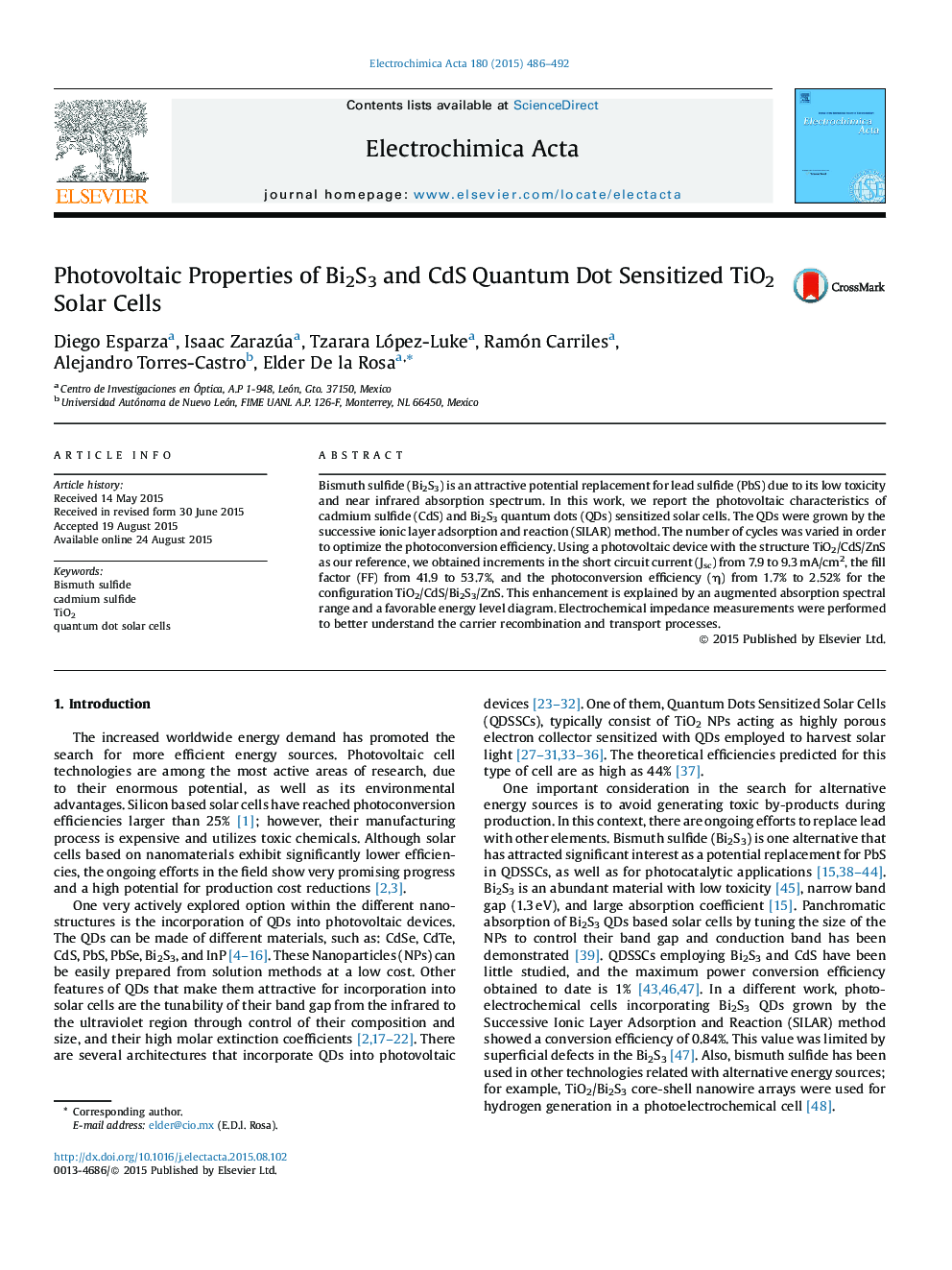| Article ID | Journal | Published Year | Pages | File Type |
|---|---|---|---|---|
| 6610373 | Electrochimica Acta | 2015 | 7 Pages |
Abstract
Bismuth sulfide (Bi2S3) is an attractive potential replacement for lead sulfide (PbS) due to its low toxicity and near infrared absorption spectrum. In this work, we report the photovoltaic characteristics of cadmium sulfide (CdS) and Bi2S3 quantum dots (QDs) sensitized solar cells. The QDs were grown by the successive ionic layer adsorption and reaction (SILAR) method. The number of cycles was varied in order to optimize the photoconversion efficiency. Using a photovoltaic device with the structure TiO2/CdS/ZnS as our reference, we obtained increments in the short circuit current (Jsc) from 7.9 to 9.3 mA/cm2, the fill factor (FF) from 41.9 to 53.7%, and the photoconversion efficiency (η) from 1.7% to 2.52% for the configuration TiO2/CdS/Bi2S3/ZnS. This enhancement is explained by an augmented absorption spectral range and a favorable energy level diagram. Electrochemical impedance measurements were performed to better understand the carrier recombination and transport processes.
Related Topics
Physical Sciences and Engineering
Chemical Engineering
Chemical Engineering (General)
Authors
Diego Esparza, Isaac Zarazúa, Tzarara López-Luke, Ramón Carriles, Alejandro Torres-Castro, Elder De la Rosa,
